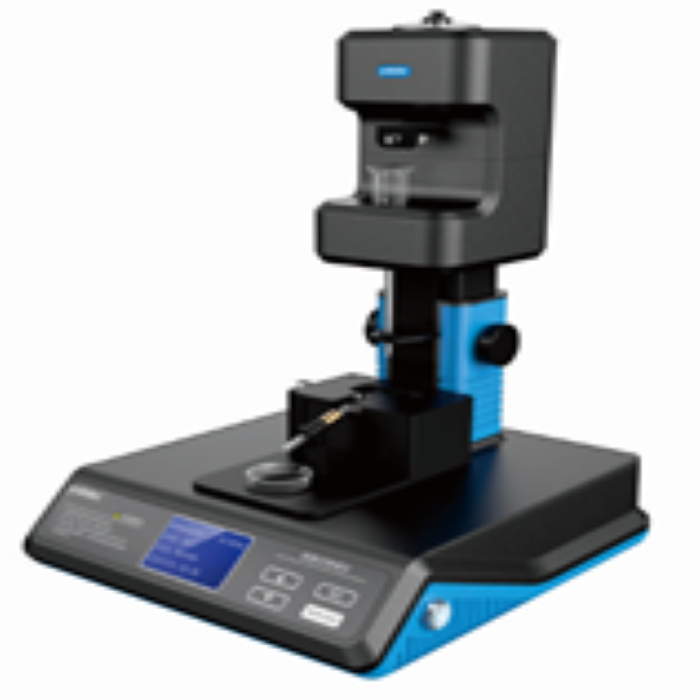Author: Michiko Chen
Date: 2019/5/25
The application of oil monitoring technology is an important guarantee for the safe operation of equipment, and it is the main way for enterprises to carry out equipment management and fault prevention. So how do we manage the operating state of the equipment by analyzing the physical and chemical indicators of the oil?
- Viscosity and viscosity index
Viscosity: A measure of the internal friction force of a fluid as it measures the ability of an oil to resist flow at a particular temperature.
Detection method: The kinematic viscosity of the oil was measured by a capillary viscometer. GB/T 265, ASTM D445.
Test purposes: 1 the main basis of oil brand division; 2 the main basis for oil selection; 3 important alarm indicators for oil degradation; 4 can determine the correctness of oil.
Viscosity Index: A parameter that indicates the nature of the viscosity of a lubricating oil as a function of temperature. The viscosity of a lubricating oil changes with temperature: the temperature rises, the viscosity decreases, the temperature decreases, and the viscosity increases. The nature of this viscosity as a function of temperature is called viscosity-temperature performance. By comparing the lubricating oil sample with a standard oil with good viscosity temperature (viscosity index of 100) and another poor viscosity temperature (viscosity index of 0), it is concluded that the viscosity of the lubricating oil is affected by the relative value of the degree of change in temperature. The viscosity index (VI) is an approximate quantitative value indicating the viscosity-temperature property of the oil. The high viscosity index indicates that the viscosity of the oil changes little with temperature, and the viscosity of the oil is good, and vice versa.
The viscosity index can be calculated by calculation. The calculation method is described in detail in GB/T 1995 of China or ASTM D2270 of the United States, DIN 51564 of Germany, ISO 2902, and JIS K2284 of Japan. Viscosity index can also be obtained by look-up table method, China’s GB/T 2541.
Aviation hydraulic fluids require a viscosity of -50 to 50 degrees and require a low temperature viscometer and a conventional fully automatic viscosity instrument.
- Total acid value
Basic Concept: The amount of acid required to neutralize all acidic components in a 1 g sample, and converted to an equivalent amount of acid, expressed in mgKOH/g.
Detection methods: color indicator method and potentiometric titration. GB/T 7304, ASTM D664.
The purpose of the test is to judge the degree of refining of the base oil; the measurement of the acidic additive in the refined oil; the important discriminating index of the oxidative deterioration during the use of the oil.
- Water content
Basic concept: refers to the percentage of water content in the oil (free water, emulsified water, dissolved water).
Detection method: the measurement was carried out by distillation; GB/T 260, ASTM D95.
Test purpose: water destroys oil film, reduces lubricity, aggravates the wear of friction parts, reacts with oil, forms acid, colloid and sludge water to precipitate oil additives, reduces the performance of oil, and makes it at low temperature. The fluidity of the oil deteriorates, and the metal material of the equipment is corroded.
- Foam characteristics
The foam characteristics of lubricating oil refer to the tendency of lubricating oil to form foam and the stability of foaming under specified conditions. The foam of lubricating oil will destroy the lubricating oil film, increase the wear and the circulation of lubricating oil. The mixing of foam in the cyclic suction of the internal combustion engine will deteriorate the lubrication conditions, cause unstable lubrication, affect the automatic control and operation precision, and generate abnormal vibration and noise, resulting in greatly reduced equipment performance.
- Mechanical impurities and insolubles
Basic concept: mainly includes impurities such as metal particles and dust in oil, colloids formed by oxidation of oil, and combustion products such as carbon deposits. Insoluble materials include: petroleum ether insoluble matter, n-heptane insoluble matter, n-pentane insoluble matter, benzene insoluble matter, and the like. Test results vary due to differences in solvent solvency. Test method: centrifugation method GB/T 8926 (ASTM D 893); filter method: ASTM D 4055 (usually 5 μ m filter membrane, or as required, such as 1.2 μ m, 0.8 μ m pore size filter).
Detection method: divided into method A and method B. Method A is to measure insoluble matter in n-pentane without a coagulant; Method B is to measure insoluble matter containing detergent oil, and a coagulant is added to n-pentane and toluene-insoluble matter.
- Pollution analysis
Basic Concept: Detect the size, quantity and distribution of contaminated impurity particles in oil.
Detection method: Automatic particle counting method (shading method) NAS 1638, ISO 4406.
Test purpose: It can quantitatively detect the quantity and pollution level of contaminated particles in lubricating oil;
For precision hydraulic systems, solid particle contamination will exacerbate the wear of the control elements;
For turbine systems, solid particle contamination will exacerbate wear on components such as bearings.

